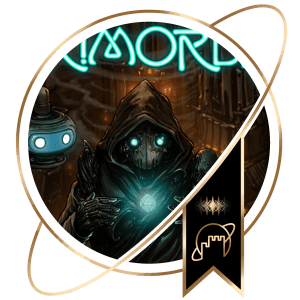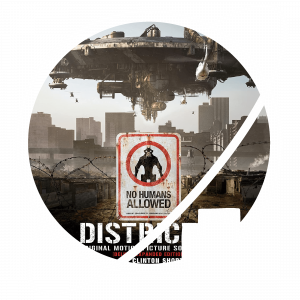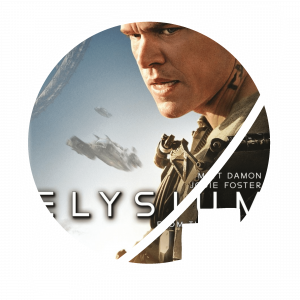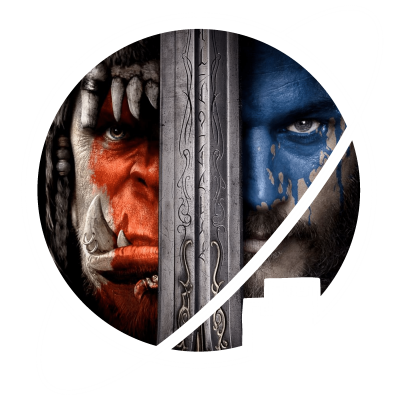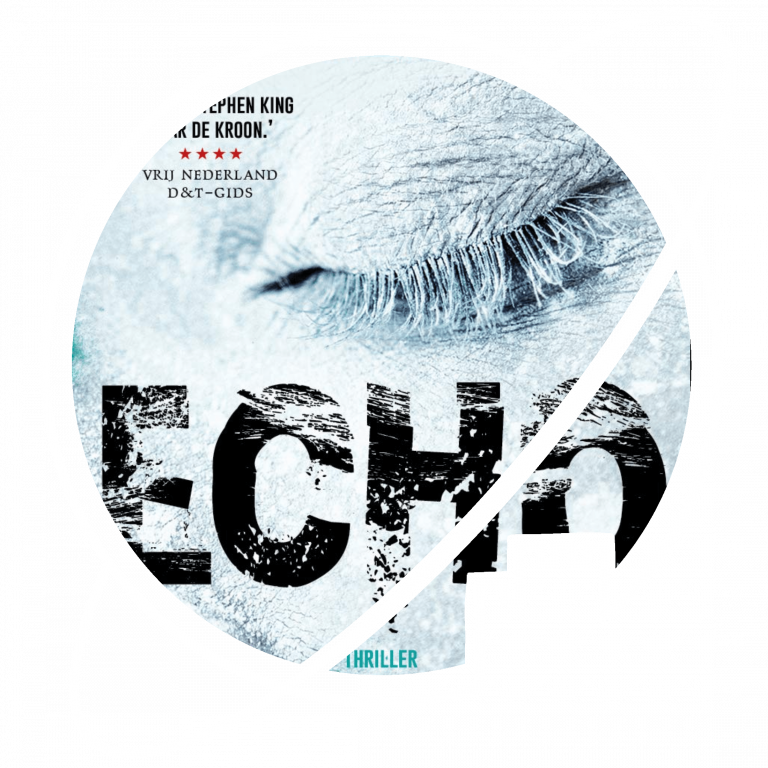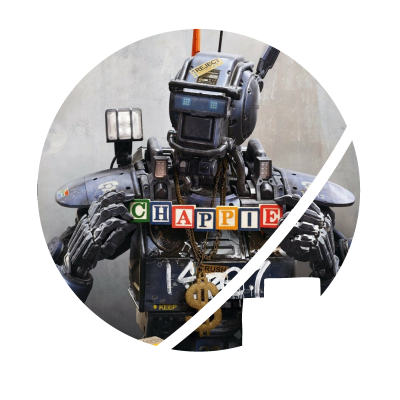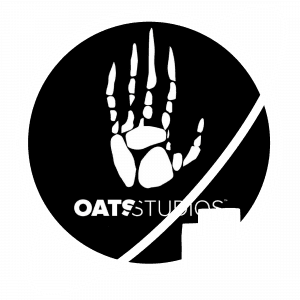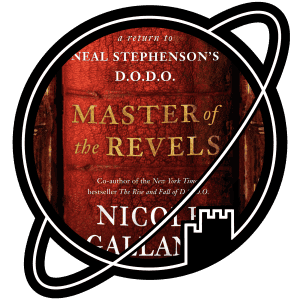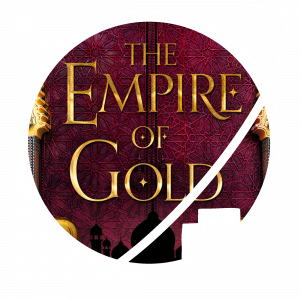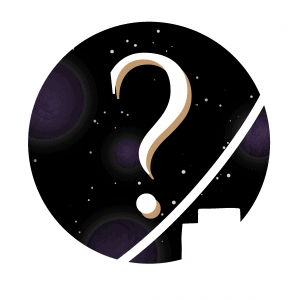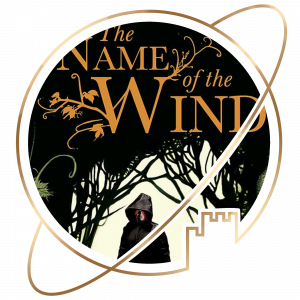Welcome to the Escape Velocity Collection!
We are an opinionated group of friends reviewing all sorts of fantasy and science fiction media. Don’t forget to get to know the curators and visit our curated Collection, where we discuss the stories that never cease to transport us to another world.
Will you escape with us?
LATEST POSTS:
Hi all, and welcome to our update for May 2022!
At the end of the month, one of our curators looks back at what they’ve been up to over the past weeks and what we can (hopefully) expect from them in the not-too-distant future.
This month, Peter will take you through his experiences in the speculative genre over the past month. Curious what models are on his painting station or what books are on his night stand?
Read on!

Past month
Sometimes life just catches up on you all at once and overwhelms you, and it feels like a month has gone past in the blink of an eye – the past weeks have been like that for me – so it feels bizarre that it has already been more than a month since we visited Elfia.
Still, if I have to pick a favourite post from the past month, it has to be Lotte’s guide on how to play convention bingo. I’m not exactly sure who or how we came up with it, but it is absolutely a tonne of fun and a good reason to really drink in everyone’s costumes at the fair.
If you haven’t read the guide yet, be sure to give it a read now!
Furthermore, I’ve spent the past months convincing people to watch Neill Blomkamp movies with me, so I could feel like there was something of a red thread to my reviews for once.
I’ve watched all three of his big movies. They’re a bit of a mixed bag, but I feel especially District 9 may be worth seeing if you haven’t already. And if you’re just looking for a not-too-smart sci-fi movies with bullets pinging of the screen. you won’t go wrong with Elysium.
At the time of writing, all three are on Netflix!
Upcoming
As I said time went quickly last month, but I did have a few moments to spend on media I liked. look out for reviews and updates the coming month.
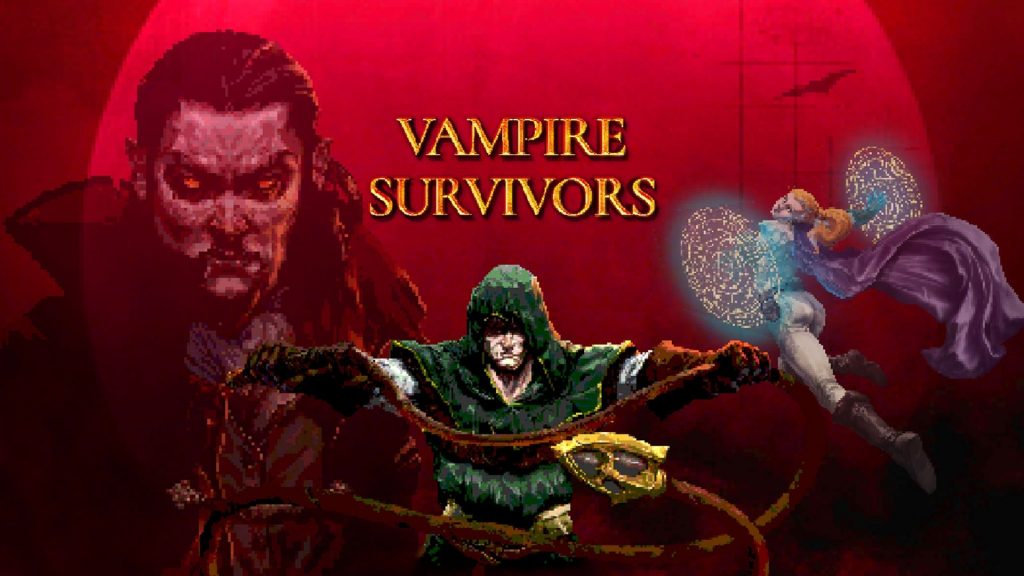
I needed a dumb video game to get my mind off of things, and boy I think I stumbled onto the king of dumb videogames. Vampire Survivors is a rogue-like survival game with gameplay so minimal it can hardly be called gameplay at all, but I have already spent hours upon hours on it – it might literally be the best EUR 2,50 I have ever spent.
I’ve painted a bit less than usual lately, but I have completed a couple of metal Uruk-Hai Scouts and I am planning on finishing them soon – you’ll see the pictures appear when they are done!
Same goes for the WotC Aasimar I’ve been painting with Robin – the sculpts are great but the casts are a bit disappointing. We’re making the best of it, and I think they’re turning out great – again, I promise pictures further down the line.
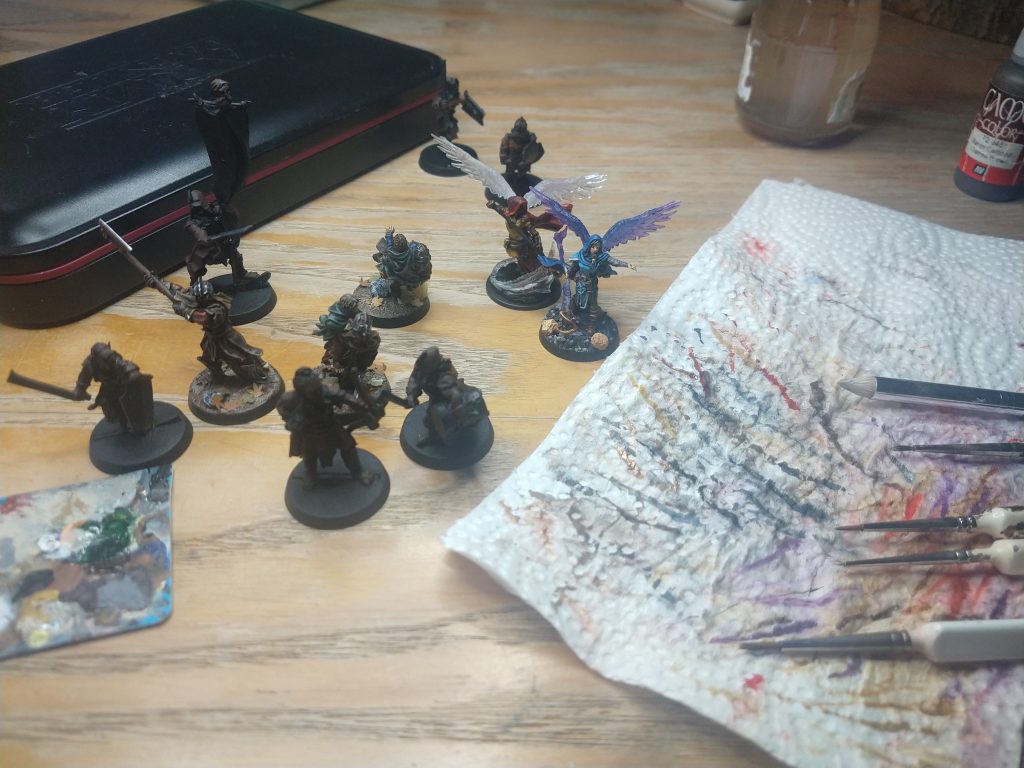
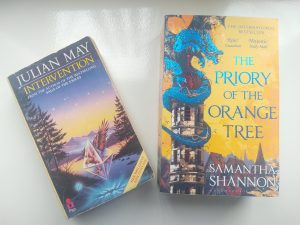
I just finished rereading Julian May’s The Adversary, wrapping up her Saga of Pliocene Exile (which I’ll be reviewing in due course), so now I have to pick which book from my shelf of shame is next. I’m mostly debating between diving right into May’s Galactic Milieu stuff with Intervention, or doing the socially expected thing and reading The Priory of the Orange Tree, which I borrowed from a friend. Also, I really want to start Hyperion.
Choices, choices.
And I finally got to American Gods! Now I understand why everyone was pushing me to read it. I think it is the best thing by Neill Gaiman I have read so far, I loved that it was just a tad darker than most of what he puts out.
I didn’t really read it, I secretly listened to the full cast audiobook instead. I really like full cast books, it really adds to the experience and I really hope it becomes more of a trend!
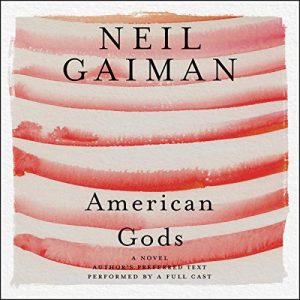
- Movie directed by Duncan Jones
- Starring: Travis Fimmel, Paula Patton, Ben Foster, Dominic Cooper, Toby Kebbell, Ben Schnetzer, Robert Kazinsky, Clancy Brown, Daniel Wu
- Released 2016
- Runtime: 123 minutes
With their own homeworld dying because of the dangerous Fel magic, all the orc clans unite under the warlock Gul’dan’s leadership to find a new home in the world of Azeroth. Here, they quickly come into conflict with the humans of Stormwind Kingdom.
While the champions of the human kingdom unite to stop the orc invaders, there are heroes on both sides of the conflict that begin realizing that there are greater dangers than the war between orcs and humans.

I was sick earlier this week. And, as I am often prone to do when I’m sick, I decided to watch a movie that I didn’t necessarily want to see but simply was curious about. Warcraft was the winner this time.
A small caveat: as a child, I enjoyed the Warcraft real-time strategy games, especially the intricate story campaigns. This means I had a basic understanding of the lore and characters in this universe when I went into this movie’s story. I suspect newcomers might be a little overwhelmed at first, though familiarity with classic fantasy tropes might alleviate this significantly. I couldn’t say how this adaption holds up for those familiar with the original deep lore of the Warcraft franchise.
I’ll admit, I had little expectations, and therefore wasn’t disappointed with what I got. Warcraft is an ambitious project, telling a story that’s a little too big for the scope of one movie. This is mainly apparent in the big cast of characters. While some of them come out well (I liked the execution of Garona and Durotan), most remain rather flat and underdeveloped. Even Ragnar Lothbrok, or rather Anduin Lothar (played by Travis Fimmel), doesn’t really grow beyond the ‘confident and skilful warrior who likes to joke’ archetype despite being one of the main characters.
Luckily, because it’s an ambitious story, there’s always something happening in your eyeballs. The special effects are more than sufficient, and the fighting scenes are enjoyable. Furthermore, there are some twists and turns that’ll keep you on your toes.
All in all, I wouldn’t say that Warcraft is a masterpiece. The plot and character choices are hazy at times. Still, it will entertain you for the better part of an evening.
See also:
- Book written by Thomas Olde Heuvelt
- Published in 2019
When a young mountaineer is mutilated by a terrible accident in the Swiss Alps, his boyfriend finds him changed upon his return to the Netherlands, and something appears hidden behind the mask of bandages that covers his face…

The first pages of Echo were thrilling. ‘There are people here,’ Olde Heuvelt writes simply. Shadows coming closer and closer and closer… I was immediately gripped. But after this prologue ended, Olde Heuvel tested my patience to its limits.
Just like Peter, I think Echo was my first dive into long-form horror. I have listened to some multi-season horror audio drama’s, but they mostly relied on short stories woven together by a longer thread – or they were just not that scary. But Echo started out very promising. Olde Heuvelt takes you on a ride of mysterious terrestrial power. I loved the parts about Nick’s climb of the Maudit, the ‘damned mountain’. It was obvious Olde Heuvelt is a climber himself and he knows what challenges climbers face, how it feels to get higher and higher and what drives climbers to always look for the next top.
Unfortunately, the storyline about Nick’s boyfriend Sam could not capture me in the same way. I think that was partly because Sam was a person very unlike myself, but also because he was not the one possessed by a mountain. Sure, he had his own trauma that came full circle in the end, but I never really believed his conflict as I did Nick’s. It felt a little forced somehow. Time after time he told me of his trauma, but I did not really feel it or see it in his actions. Moreover, I did not see how it had anything to do with the Maudit. How did Sam experience paranormal activity on the other side of the Atlantic, while I as reader had no reason to believe there were more paranormal forces active in this world than the Maudit?
Sam’s story was amusing, but not gripping, and that made me impatient for the next ‘good bit’. Therefore, I would say that the first 250 pages of the book could lose 100. The second half was more entertaining. I was no longer waiting for them to spell out what I had (more or less) figured out and they tried to do something about it! The story did not stall anymore from there.
In the end, I am glad I pushed through and I enjoyed the ride. Nick, I know you did not mean it and I love you. Sam, you’re all right.

Echo made me realise something about my experience in horror so far: Almost all of the horror media I’ve gotten into was short, like a short story or a movie, or a novella at its longest. That makes sense, because horror is all about the suspense, about stretching the mystery of the unknown for as long as possible before a final reveal. The longer the stretch, the more brittle the suspense, and the bigger the payoff has to be at the end to make it all worth it.
Echo is not poorly written, but it is full-length (I listened to it, it would have been nearly 20 hours at 1x speed). That means that it alternates between short sections of true horror and a more thriller-like plot progression in which the main character try to figure out what is going on and what it means for their relationship. I felt the horror sections were well written, but in its full length, the book overstays its welcome. It may be in part due to the fact the I am not particularly susceptible to occult mystery, but I took the narrative as more of a challenge to figure out what was happening. Unfortunately, I didn’t feel as if there was any logic to the occult forces at work and the reveals at the end weren’t as satisfying as I had hoped they would be.
I suspect there is probably a good 200-page novella hidden somewhere in this 500-page book, or even better, a movie script (which I feel Olde Heuvelt is already applying for a bit with his style). In a shorter form with a focus on the suspenseful moments, the plot could be quicker and more tense, there could be less repetition, and especially if it were adapted for the screen, the lack of logic underlying the horror could be smoothed over with some visual magic.
Overall, well written but probably too long. Not for me, but if you like horror, you might find you like it better than I did. If you haven’t read Olde Heuvelt’s HEX yet, I would recommend giving that a shot first — I read it too long ago for a proper review on the website, but it is about half as long as Echo, more cohesive, and filled to the brim with delightful Dutchness. That one is a definite recommendation.
Tagged:
- Movie directed by The Wachowskis
- Starring: Mila Kunis, Channing Tatum, Sean Bean, Eddie Redmayne, Douglas Booth
- Released 2015
- Runtime: 127 minutes
In this grandiose Space Opera, a young woman who struggles to survive as a cleaner in modern-day America suddenly finds herself at the centre of a galactic conspiracy. Protected by two genetically engineered soldiers and her own down-to-earth wit, she must be the one to save humanity.

I cannot even begin to conceive how it must have felt to buy a ticket to a Sci-Fi blockbuster and having this mess unfold in front of you.
This is THE most batshit insane Space Opera about a girl named Jupiter, who turns out to be the reincarnation of an important Galactic Queen or something. People want her dead and a generic Action hero comes to save her. Here’s my truly unfiltered thoughts:
- There’s a fight scene that lasted so long I fully dissociated and woke up like 5 minutes in to realise it was still going. They could have used some of that time to have Jupiter actually bond with the wolf guy but what do I know.
- I don’t remember what I actually meant with “Wolf guy” when I wrote this. Wikipedia tells me that this character was “half-canine” so I suppose that explains it.
- Obsessed with Eddie Redmayne’s performance. I’m not sure exactly what he’s trying to do but BOY is he doing it. Eddie’s really giving it his all. I often try to remind myself that as long as you do something with commitment, people won’t think you’re silly. Unfortunately for Eddie, this doesn’t seem to apply to this movie.
- Mila Kunis and the Wolf guy have zero chemistry. They have this almost romance scene where she’s like “i like wrong guys” and he’s like “ur royalty, we mustn’t.” As if they’ve seen some kind of build up to where we can expect them to hook up, which we haven’t seen at all. Of course we KNOW they’re gonna hook up because she’s the protagonist of a Hollywood Blockbuster and he’s a gruff gunslinger, but there’s zero chemistry between them.
- It’s definitely trying to be a whole bunch of stuff at the same time, and therefore succeeding at none of it. It’s trying to be a Dune-esque big scope Sci Fi movie, but Mila Kunis’s down to Earth (ha, ha get it? Cause she actually goes into space?? Nevermind) attitude and the presence of the “normal” human characters make Eddie Redmayne’s Space Royal thing look down right ridiculous. It takes a stab at being a comedy when they try to get Jupiter “registered”, but it’s so unexpected because you can’t really tell when the movie wants you to take it seriously and when you’re supposed to think it’s funny.
- BAFFLED to find out this was written and directed by the Wachowskis!!!!! Girlies WHATT. I guess at least that explains how this movie got made.
- Truly a good movie to watch if you’re ever worried about your own work being good enough. It doesn’t have to be good. Even stuff like this gets millions of dollars thrown at it. Make the thing.
3 stars for being entertaining in its badness.
Tagged:
- Movie directed by Neill Blomkamp
- Starring Sharlto Copley, Dev Patel, Hugh Jackman, Ninja, Yolandi Visser, Jose Pablo Cantillo, and Sigourney Weaver
- Released 2015
- Runtime: 120 minutes
The Johannesburg police force has incorporated nearly indestructible robots in its ranks to combat violent crime, though their sentience is limited. Just when a software developer is testing out his more advanced version of the AI program on a written off unit, he gets kidnapped by gangsters looking to hack the police robots for a planned heist. But what happens to a newly awoken sentient AI when he is raised by those same gangsters?

That’s three Neill Blomkamp movies for three weeks now, and unfortunately, of the three, Chappie is my least favourite.
Chappie is similar to the other Blomkamp movies I’ve reviewed in that it has interesting ideas, but falls short in its execution. In Chappie, that is mostly the result of the tonal inconsistencies combined with a less-than stellar script.
Firstly, the tone – it is all over the place. The visuals are over the top, almost cartoonish. The gangster main protagonists are effectively the stage personas of Die Antwoord, a South African rap formation, with the characters even sharing the actors’ stage names. They are as… colourful (not to say: trashy) as their real world counterparts appear to be, based on a quick glance at the abuse allegations on their Wikipedia page. This is contrasted with what (I assume) are supposed to be heartfelt moments of love and betrayal. The juxtaposition is jarring. If Blomkamp is trying to ask serious questions on automated policing or say something about parent-child relationships or the better nature of down-on-their-luck-gangsters, it is drowned in mediocre jokes and the constant violence and abuse his characters subject each other to.
Secondly, the script is a bit meandering and full of holes, missed opportunities and unfired Chekov’s guns. At least Chappie avoids the mistake District 9 makes, and makes very clear from the start that it will be a violent movie. But as I was watching it with Key, we were already discussing easy ways the script could have been improved, characters copuld have been made more interesting, or the plot could have been resolved with easy shortcuts that the characters apparently missed. This made me constantly question how anything was supposed to work: the sci-fi technology in this movie functions strictly as the plot demands, even if that contravenes other things we’ve seen happen on screen. That is a pity in a movie that is ostensibly about artificial intelligence and features a plot driven by technology.
Finally, I’m a bit irked by the fact that this is Blomkamp’s second movie set in Johannesburg, and that Chappie and District 9 effectively have a grand total of three non-white characters between them; only Deon in Chappie has a significant role, and he is played by Dev Patel, a British actor of Indian descent. Where are all the black Africans in Blomkamp’s Johannesburg? Truth is, they’re probably either rioting in the streets or barbaric crime lords. Makes you wonder.
In conclusion, is Chappie unwatchable? Certainly not – perhaps this review is making the movie out to be worse than it is because there are so many points where I feel it could have been improved. It doesn’t look too bad and the eponymous robot is charming and a pleasure to watch. But I’m really struggling to find a group of people to recommend it to.

I don’t know if I can add much to Peter’s review. Spotting plot holes that jerk you out of your suspense of disbelief is fun afterwards, but if you see them during the movie, that does not sit well with me. Chappie (the AI) is charming and his development into a gangster with a moral compass is fun to watch, but his ‘education’ by gangsters also brings up moral questions that the movie never answers. And why are poor people in Blomkamp’s movies always taken straight out of Mad Max: Fury Road? I still don’t know if he wants us to see them in a sympathetic or unsympathetic light.
My greatest disappointment was the flatness or superfluity of characters that could easily have had real intrinsic motivations. CEO Michelle Bradley (a waste of Sigourney Weaver) was only there to say ‘no’ to Deon’s wish to test his conscious AI and ‘yes’ to Vincent Moore’s ‘release of the kraken’, things both characters would have done anyway. And Vincent Moore himself… he could have been so much more than just evil. In the beginning of the movie, he almost advocated that a machine needs a human controlling it to keep it grounded, moral even – a claim he himself would (dis)prove at the end of the movie. But no, he was just cruel, with jealousy as his only reason.
I will be a little kinder in my rating than Peter, because despite of its flaws, I did have fun watching Chappie. When I decided to let go my critical eye and not take the movie too seriously, it was a nice ride to a semi-emotional happy ending.
Tagged:
- TV-show created by Patrick Somerville for HBO Max
- Based on Station Eleven by Emily St. John Mandel
- Released in 2021
- Starring Mackenzie Davis, Himesh Patel, Matilda Lawler, David Wilmot, Danielle Deadwyler and others
- Miniseries
On the night a deadly flu pandemic hits the city of Toronto, famous actor Arthur Leander suffers a heart attack and dies on-stage during a performance of King Lear. While the pandemic continues to spread, the people in Arthur’s life start to realise that the world as they know it is coming to an end.
Twenty years later Kirsten, one of the child actors who witnessed Arthur’s death, travels between settlements in the post-pandemic world together with a company of actors and musicians. As they try to keep something of the old world alive in their performances of Shakespeare’s plays, they will have to navigate the dangers of their new world.


I really enjoyed the book Station Eleven and I was looking forward to the TV adaptation, but unfortunately it turned out to be kind of a let down for me. The show has a great cast and it started out promisingly, but pretty soon it took a turn for the worse as it started deviating from the book. I am not opposed in principle to adaptations deviating from their source material, at least not if it serves a purpose. In some cases this can be because a certain narrative technique or storyline just does not translate well across mediums and therefore has to be adapted, or in other cases it can be because the adaptation can add a new perspective to the story. For example, since Station Eleven was written before the COVID-19 pandemic and the TV-show was made during/after the outbreak, it would have been interesting to explore the effect that this has on how we as viewers experience the story.
However, for this TV-show I did not find that the deviations from the book added anything worthwile to the story. Instead, the additions seemed to make very little sense and disrupted my suspension of disbelieve enough to take me completely out of the story. The book has several different storylines and while some of these do come together in the end, not all of them do. Clearly, the writers of the show did not find this a satifying enough ending, and so they have changed these storylines in order to forcibly make them come together. It should not come as a suprise that the storylines have suffered in the process.
The show does have some things going for it. I liked how they handled Miranda’s character, and Arthur also seemed to gain some more depth which would have been interesting to explore further. However, in general I think the show would have been a lot better if they had stuck more closely to the book.
Tagged:


Review: Warcraft – Duncan Jones
With their own homeworld dying because of the dangerous Fel magic, all the orc clans unite under the warlock Gul’dan’s leadership to find a new home in the world of Azeroth. Here, they quickly come into conflict with the humans of Stormwind Kingdom.
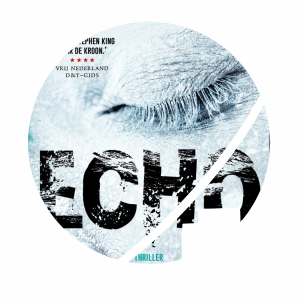
Review: Echo – Thomas Olde Heuvelt
When a young mountaineer is mutilated by a terrible accident in the Swiss Alps, his boyfriend finds him changed upon his return to the Netherlands, and something appears hidden behind the mask of bandages that covers his face…

Review: Jupiter Ascending – the Wachowski Sisters
In this grandiose Space Opera, a young woman who struggles to survive as a cleaner in modern-day America suddenly finds herself at the centre of a galactic conspiracy. Protected by two genetically engineered soldiers and her own down-to-earth wit, she must be the one to save humanity.

Review: Chappie – Neill Blomkamp
A software developer testing an advanced AI program gets kidnapped by gangsters looking to hack police robots for a heist – and end up raising the AI they accidentally captured.

Review: Station Eleven – HBO Max
On the night a deadly flu pandemic hits the city of Toronto, famous actor Arthur Leander suffers a heart attack and dies on-stage during a performance of King Lear. Twenty years later Kirsten, one of the child actors who witnessed Arthur’s death, travels between settlements in the post-pandemic world together with a company of actors and musicians.

